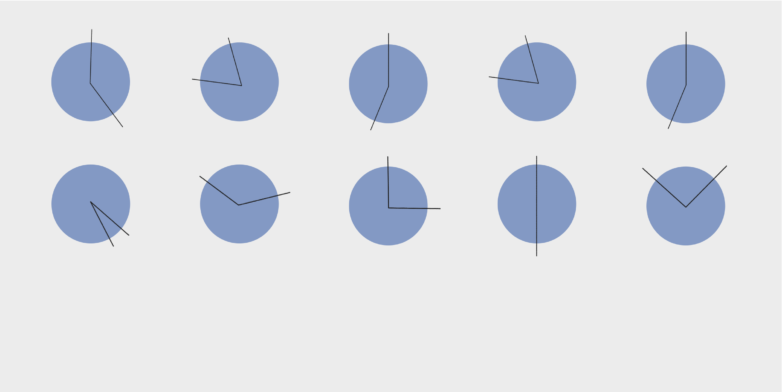What is Agile Marketing?
Agile marketing is a data-driven marketing approach focusing on customer value and business results. A marketing team that uses agile marketing is self-organized, with cross-functional teams that produce content frequently and receive continuous feedback. Agile marketing includes implementing experiments to gather data and understand customer behavior. Marketers use the experimental data to continually adjust to changes in customer behavior and market trends to boost the performance of marketing campaigns.
Teams that use the agile marketing approach set goals to work on for short periods, often called sprints, allowing them to deliver high value quickly. Agile marketing is a strategic approach that is successful for short-term and long-term planning. Because the approach works in short periods, your team will achieve its short-term goals. It is also strategic long-term because you will increase customer loyalty and engagement by prioritizing and adjusting to their needs and preferences.
Customer LTV Excel Calculator Template
Examples of Agile Marketing
There are many methods brands can use to implement agile marketing, including:
- Stand Up Meetings – for an agile team to be effective, weekly or daily meetings are necessary to stay organized and updated in a quick huddle.
- Sprints – divide a project into smaller tasks called sprints that last for two to six weeks. Sprints help teams work towards specific goals faster and more efficiently.
- Track Progress – develop ways to track project and task progress to ensure each team is working toward its goal. For agile marketing to improve your team’s efficiency, it is necessary to track progress so that all projects get completed.
- Collaboration – agile marketing requires teams to collaborate so team members complete tasks quickly. To foster good collaboration in your team, make sure your team can communicate with each other through reliable networks and tools.

The Benefits of Agile Marketing
Agile marketing works best when teams set a problem or goal and develop projects and tasks to achieve the desired outcome. Implementing agile marketing in your team can help you deliver high value frequently to customers. Some benefits of agile marketing include:
- Speed – using the agile marketing approach, your team will deliver value to customers faster. Each team must be small and cross-functional so that each team can complete tasks individually with few handoffs in between teams.
- Productivity – when teams have clear tasks and projects to work on in a specific time, they can get through the tasks faster without waiting for information or approval from other teams. Agile marketing allows teams to be more productive without using more resources.
- Transparency – implementing agile marketing creates visibility between teams because everyone needs to know what other people are working on to work together with a few touch points.
- Flexibility – agile marketing focuses on data, so it is necessary to be able to react to changes. Flexibility allows marketers to change based on data and customer feedback, delivering higher value to customers.
- Data-Driven – continuously measuring success and adjusting when something does not work helps make the team more efficient and produce better results. By constantly experimenting, marketers can implement the best marketing campaigns to capture the most from customers. They can understand inefficiencies inside their teams to adjust and improve how the team works.
Customer Lifetime Value Excel Calculator
Download this Excel-based template for a fast and easy method to calculate your customers’ lifetime value.
Agile Marketing vs. Traditional Marketing
Agile marketing focuses on delivering content frequently, experimenting, and adjusting with the data, whereas traditional marketing focuses on planning and up-front work. The main difference between agile and traditional marketing is how each approach plans and executes campaigns. Agile marketing constantly experiments and adjusts to changes in data as they occur. Traditional marketing analyzes data after campaigns happen. Because traditional marketing does not continuously analyze data, it is challenging to predict the success of marketing campaigns and keep up with changing customer preferences.
Agile marketing and traditional marketing also organize their teams differently. Agile marketing breaks down the silos by working in cross-functional teams with a heavy emphasis on collaboration. Traditional marketing works in silos and hierarchies that work in structured stages. Another difference is that agile marketing approaches focus on the customer as they continuously analyze data to adjust to changes in customer attitudes, but traditional marketing focuses on the company. A customer-centric approach is best for today’s marketing environment, where customers make quick decisions and want personalized messaging.

How Optimove Implements Agile Marketing
Optimove’s automated marketing platform allows you to integrate all your data, continuously gather insights on customer behavior, use predictive models, and constantly produce the most optimal marketing campaigns. Optimove allows you to implement an agile marketing approach by experimenting, adjusting messaging, and implementing a customer centric marketing strategy.
Contact us today or request a web demo to learn how Optimove can help you increase customer engagement and satisfaction by applying the agile marketing approach.
Get a personalized tour of Optimove
Let us show you how to go from tens to hundreds of segments


